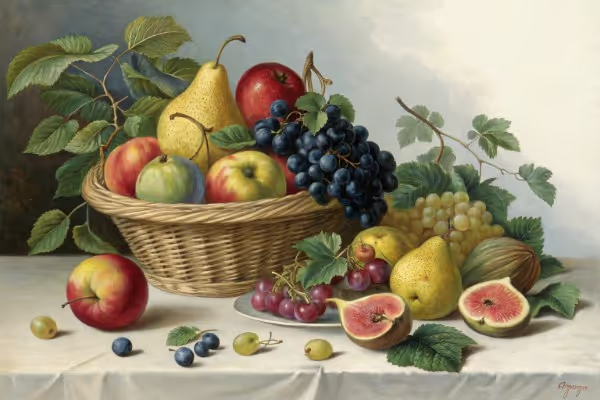Propagate Cuttings With Honey for Healthy Plant Growth

Propagate Cuttings With Honey
Skip synthetic chemicals—and propagate cuttings with honey, nature's antimicrobial rooting stimulant. Dip your fresh plant cuttings lightly into raw honey, then plant them directly into dampened soil for healthier, sturdier root development. Gardeners who propagate cuttings with honey swear by its gentle effectiveness—and the promise of vibrant new growth makes it worth adding to your propagation toolkit.
Cheatsheet: Root Cuttings Naturally Using Honey
🛠️ Tools and products you'll need
- Raw honey (avoid processed)
- Healthy plant cuttings (4–6 in / 10–15 cm)
- Sharp sterilized scissors
- Small dish or bowl
- Potting mix or water
- Clean pots
- Plastic bag or humidity dome
🌱 Why honey?
- Natural antimicrobial
- Encourages root growth without synthetic hormones
- Boosts plant health and self-sufficiency
- Rooting success up to 30% more than water alone
✂️ Prepare cuttings
- Select non-flowering stems
- Cut just below a node (angle cut)
- Remove lower leaves; keep top leaves only
- Let cut ends air-dry for 10 min
🍯 Apply honey
- Pour 1–2 tbsp (15–30 ml) honey into dish
- Dip cut end 1 in (2.5 cm) into honey
- Tap off excess honey
🌿 Plant and root
- Push cutting 2 in (5 cm) into moist potting mix or water
- Cover with plastic bag/dome for humidity
- Keep at 70–75°F (21–24°C), out of direct sun
- Mist daily; check for roots in 2–4 weeks
🧑🌾 Tips for success
- Use fresh honey each time
- Cuttings from herbs, roses, pothos, coleus root fast
- Reduce disease risk—honey’s enzymes fight pathogens
- Rooted cuttings grow stronger, healthier plants
🥗 Self-sufficiency bonus
- Propagate edible herbs for homegrown nutrition
- Share or swap starts with neighbors
Why Honey Beats Synthetic Rooting Hormones
I've always preferred natural methods, especially when propagating plants from cuttings. Years ago, I stumbled upon the intriguing concept: propagate cuttings with honey. Skeptical but curious, I gave it a try—and never looked back.
Synthetic rooting hormones certainly do the trick, but honey imparts natural antifungal and antibacterial protection. Honey's magic lies in its enzymes and sugars, creating the ideal environment for roots to establish themselves without threat from fungus or mold.
"Honey contains glucose oxidase, an enzyme producing hydrogen peroxide. This provides gentle but effective protection against pathogens."
Choosing the Right Honey: Raw or Filtered?
Always reach for raw, unpasteurized honey. Raw honey preserves its natural enzymes and beneficial microbes lost during pasteurization. Supermarket honey, however tempting, is often heat-processed, diminishing its effectiveness for propagation purposes.
Which plants respond best?
- Herbs: rosemary, lavender, basil, and oregano are fantastic candidates for honey-root propagation.
- Woody shrubs: roses, hydrangeas, and azaleas root readily with honey.
- Houseplants: pothos, philodendron, and jade plants also thrive using this sweet technique.
Step-by-Step Guide: Propagate Cuttings With Honey
- Select and Prepare Cuttings: Snip a healthy stem, about 4–6 inches (10–15 cm) in length, removing lower leaves to expose at least two nodes. Nodes are crucial spots where new roots sprout.
- Apply the Honey Mixture: Carefully dip the trimmed base (avoid coating leaves) into a diluted honey mixture—one tablespoon (15 ml) raw honey mixed with two cups (475 ml) warm water.
- Plant and Wait: Insert cuttings into moist, well-draining growing medium like perlite or sand mixed with peat moss. Keep them sheltered in bright, indirectly lit areas, maintaining temperatures around 70°F (21°C).
- Monitor and Maintain Humidity: Regularly mist to increase humidity without letting medium become waterlogged. Rooting typically occurs within 2–4 weeks, depending on the species.
Personal Experiences and Observations
During one particularly challenging season, I found myself struggling to propagate rose cuttings in my garden. Synthetic rooting powders weren't performing well, and frustration mounted.
Switching to honey, initially just as a hail-Mary pass, transformed my propagation success rate dramatically. Not every experiment worked flawlessly (gardening rarely does), but overall rooting improved.
Important Considerations
- Avoid direct sunlight until established to prevent drying out.
- Ensure the honey-water mix remains fresh—discard and remake weekly.
- Resist the temptation to tug on cuttings to check roots, as disturbance could damage budding root systems.
In nature's endless storehouse, honey offers a safe, affordable alternative that encourages cuttings to flourish without synthetic intervention. While rooting powders work fine, honey gives me greater satisfaction—and frankly, superior plant health.
Often, the simplest solutions hold the sweetest rewards.

Want smarter plant choices? 🪴
Frequently Asked Questions on Using Honey To Propagate Cuttings
How does honey help propagate cuttings?
Honey contains natural antifungal and antibacterial properties that protect your cuttings from infection. Additionally, its enzymes gently encourage root formation, supporting healthy and vigorous growth.
What types of plants respond best to honey-treated cuttings?
Most common ornamental and edible plants, including roses, herbs like basil and mint, succulents, and various shrubs, respond positively. Plants that typically root easily from cuttings benefit significantly from honey treatment.
Do I need to dilute honey before applying it to plant cuttings?
Yes, dilution ensures proper absorption. Mix approximately one tablespoon (15 ml) of pure honey with two cups (475 ml) of warm water, creating a balanced rooting solution. Allow the mixture to cool before dipping your cuttings.
How long should the cutting remain dipped in the honey solution?
Quickly dip the base of your cutting into the prepared honey solution for approximately 5–10 seconds. This brief immersion supplies an even coating, reducing the risk of over-application.
Can honey-treated cuttings survive outdoors immediately after planting?
Initially, place your treated cuttings in a sheltered spot or indoors, maintaining temperatures between 65°F–75°F (18°C–24°C). Once rooting occurs within 2–3 weeks, you can gradually acclimate them outdoors.
How frequently should honey-rooted cuttings be watered?
Water lightly every 2–3 days, maintaining consistently moist—yet never waterlogged—soil. Ensuring proper drainage is essential to help prevent root rot and fungus.
How do I check if my cuttings have successfully rooted?
After about 2–3 weeks, gently tug the cutting upward. Resistance usually indicates successful root formation. Alternatively, check for new leaf growth or root tips emerging from drainage holes in the container.
Propagate Cuttings With Honey and you’re working with nature, not against it. This old-school trick gives your plant babies a fighting chance—its natural enzymes fend off rot, and its stickiness keeps things snug. Plants get what they need to root without any chemical fuss. If you’re keen on regrowing your favorites, honey is a smart, simple ally. Just dip, plant, and watch roots push out strong. Sometimes, the best solutions are the ones sitting in your kitchen. Try it yourself, and you’ll see—gardening doesn’t have to be complicated to be rewarding.
The Homesteader's Take: Honey Propagation for Thriving, Self-Sufficient Gardens
Natural Resourcefulness
Using raw honey from local bees supports pollinator populations and maintains ecological balance. Homesteaders favor honey propagation to reinforce sustainable gardening without commercial rooting compounds.
Economic Independence
- Honey rooting solution saves the typical gardener up to 50% annually compared to store-bought rooting hormones.
- One tablespoon (15 ml) of honey mixed with one cup (240 ml) boiled and cooled water can treat over 30 cuttings.
Supporting Plant Health Naturally
Honey's natural antifungal and antibacterial properties reduce risk of fungal infections that threaten young cuttings. Studies show cuttings propagated with honey develop stronger root systems within 14 to 21 days compared to untreated samples.
Preserving Nutritional Integrity
Raw honey contains trace minerals and vitamins (calcium, magnesium, potassium, vitamin C) beneficial to newly formed roots, establishing healthier plants from early growth stages.
Storage and Shelf-Life
A properly sealed honey rooting solution remains usable for up to 2 weeks if refrigerated between uses, ensuring minimal waste for homesteaders managing plant propagation schedules.
Find out which plants will thrive in your garden!
Answer a few fun questions and get custom plant recommendations perfect for your space. Let’s grow something amazing together!

start your season





